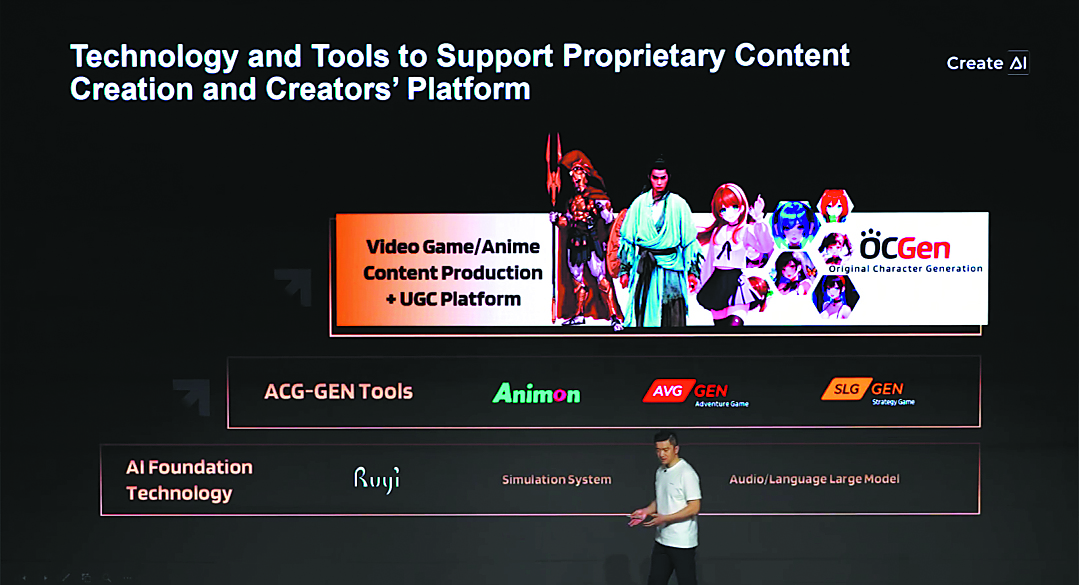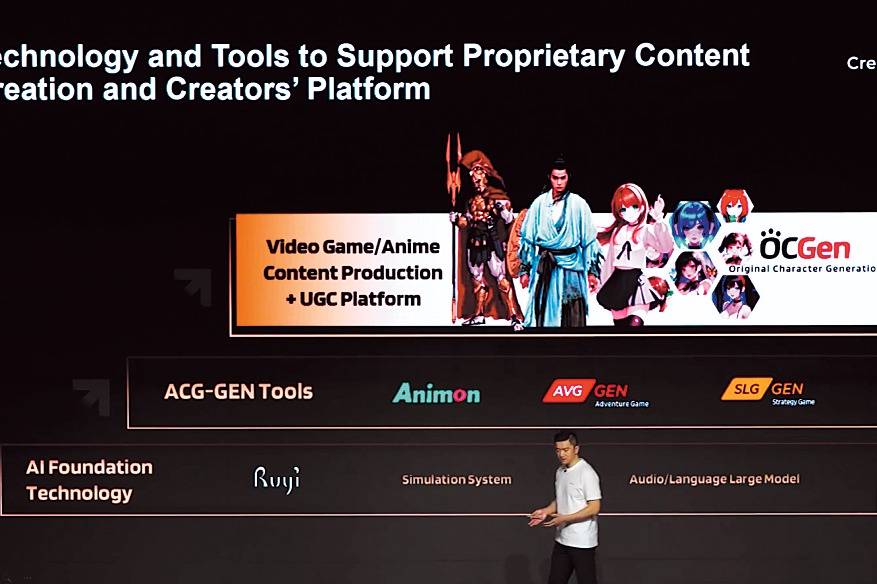
Chinese artificial intelligence technology company CreateAI is speeding up its push into the video games and animation sector, as the AI revolution in digital entertainment content is a once in a lifetime opportunity that will reshape the industry landscape.
Cheng Lu, president and CEO of CreateAI, said the company is developing underlying AI technology and infrastructure, which includes its proprietary video generation large models Ruyi, as well as fine-tuning other industry leading models.
“We will leverage our proprietary AI simulation systems for video game development. Building on top of the foundational technologies are customized software tools that assist human creators in the development of various anime and gaming content,” he said.
“These tools are developed with close collaboration between our in-house animators, game developers and AI engineers,” Lu added.
This year, the company will launch a series of AI generation tools and a user generated content platform for anime fans and creators around the world. “In addition, we have a full pipeline of self-developed digital entertainment content powered by AI,” Lu said.
CreateAI has rolled out an AI video generation tool tailored for anime, comics and gaming called Animon.ai, which has gained popularity in Japan.
In December 2024, it unveiled Ruyi, a proprietary image-to-video model trained on specialized animation and sci-fi datasets. Ruyi addresses challenges like frame consistency and style adaptation, delivering dependable, high-quality outputs for creators.
Lu said the challenge facing the gaming and animation industry is the supply of content. “In Hollywood and Japan, top-tier studios are drowning from rising production costs, labor shortages and long development cycles,” Lu added, highlighting that generative AI isn”t here to replace artists, it’s here to empower them.
Anime production is a 14-step marathon — scriptwriting, storyboarding, keyframes and coloring — all by hand, he said. “With our technology, we can generate layouts, design characters and generate keyframes and in between frames with a click of a button. Directors gain time to experiment, innovate and make the stories really come to life.”
He said for games, AI will transform all of the steps in the production process. For instance, video models vastly accelerate environment and character design, while AI simulation systems will better optimize gameplay. He’s confident that the company, with its technology and tools, can cut current game development costs by more than 50 percent within five years.
Technological progress must be anchored in real-world applications and sustainable business models, Lu noted.
The company has a two-pillar revenue model, Lu said. “The first is self-developed content leveraging major intellectual properties to develop blockbuster digital entertainment content. The second is operating AI tools and user generated content platforms to allow fans to become professional creators, building a more vibrant community.”
Lu said the company is developing a major 3A open-world role-playing game based on the IP of Jin Yong’s martial arts novels and characters, as well as a 2D animated film based alongside a game adaptation of The Three-Body Problem.
“AI-generated content technologies will improve the productivity of content production, and bolster innovation in the digital culture industry,” said Pan Helin, a member of the Expert Committee for Information and Communication Economy, which is under the Ministry of Industry and Information Technology.
Pan noted that the process of developing video generation models necessitates higher requirements for computing capacity, algorithms and high-quality data, adding that more efforts are needed to bolster the efficient circulation of data elements and expand application scenarios of video generation models in a wider range of segments.
Lu said the future of digital entertainment will be shaped not by generic large-scale models, but by specialized solutions tailored to specific industry needs. “CreateAI is dedicated to solving animation industry challenges, redefining creative workflows and empowering artists to amplify, not replace, their vision through AI.”
Chen Duan, director of the Digital Economy Integration Innovation Development Center at the Central University of Finance and Economics, said AIGC will unleash people’s demand for tools that can help them express their creativity and drive the evolution of commercial models in content production. Although AIGC is still nascent, Chen said she is bullish on its prospects.

